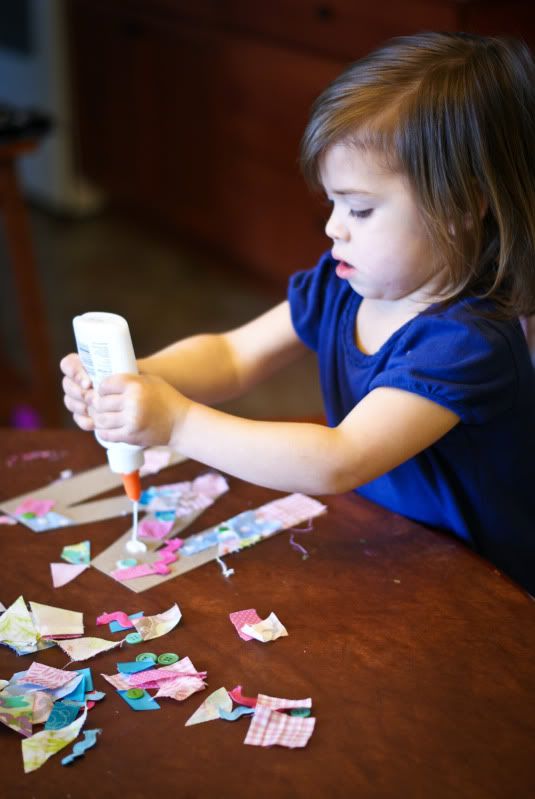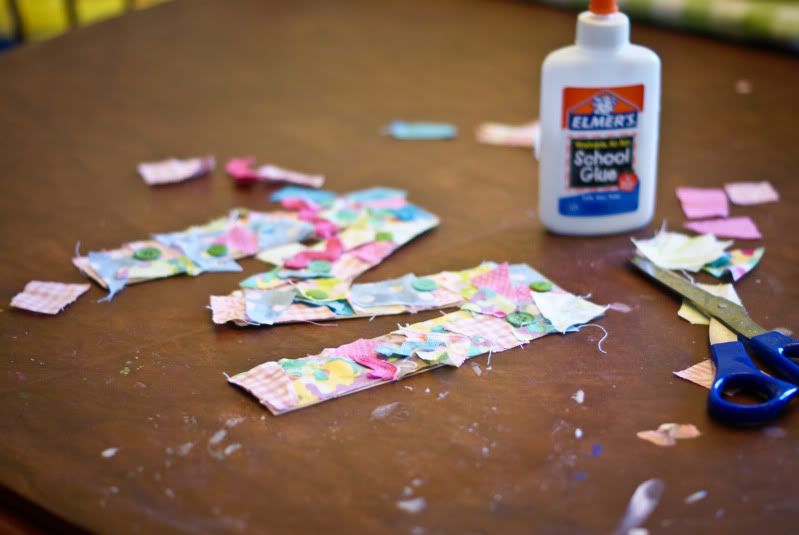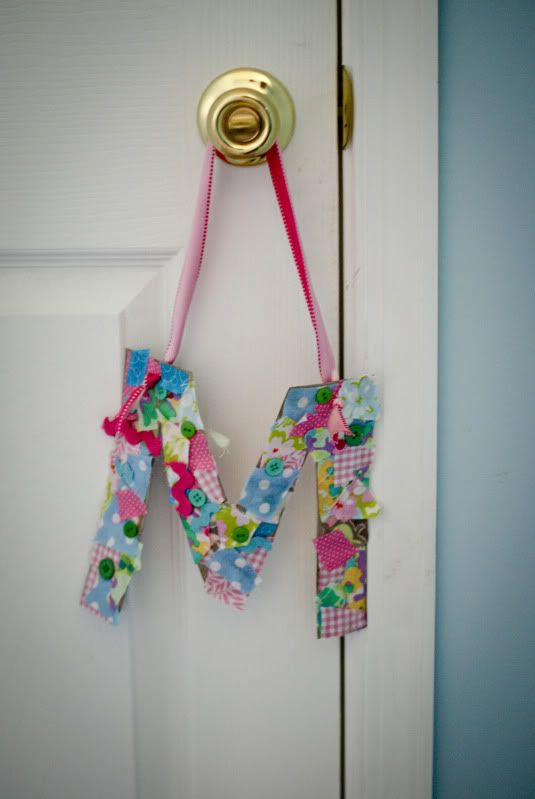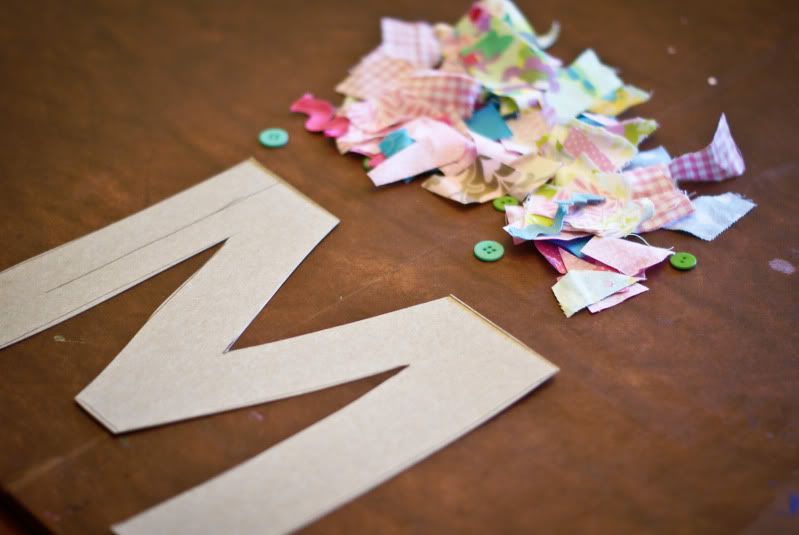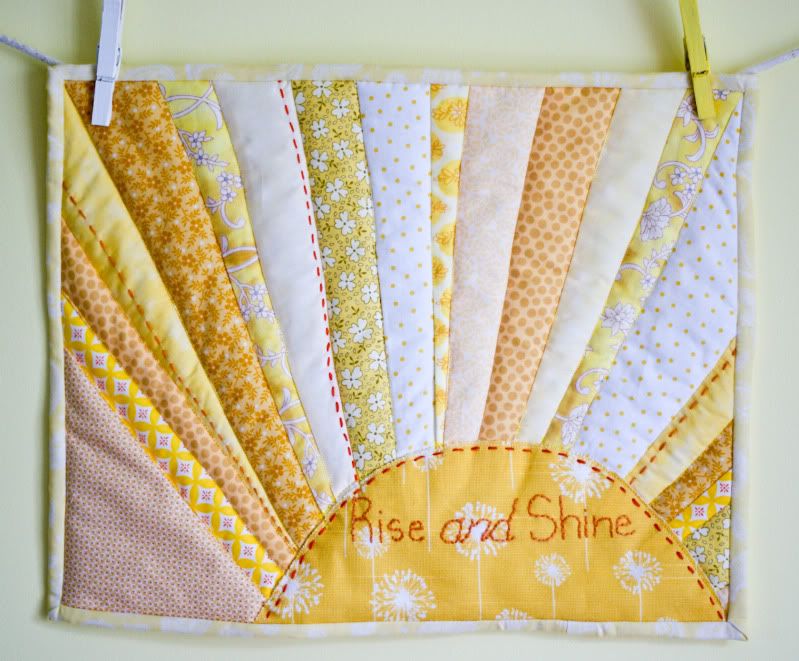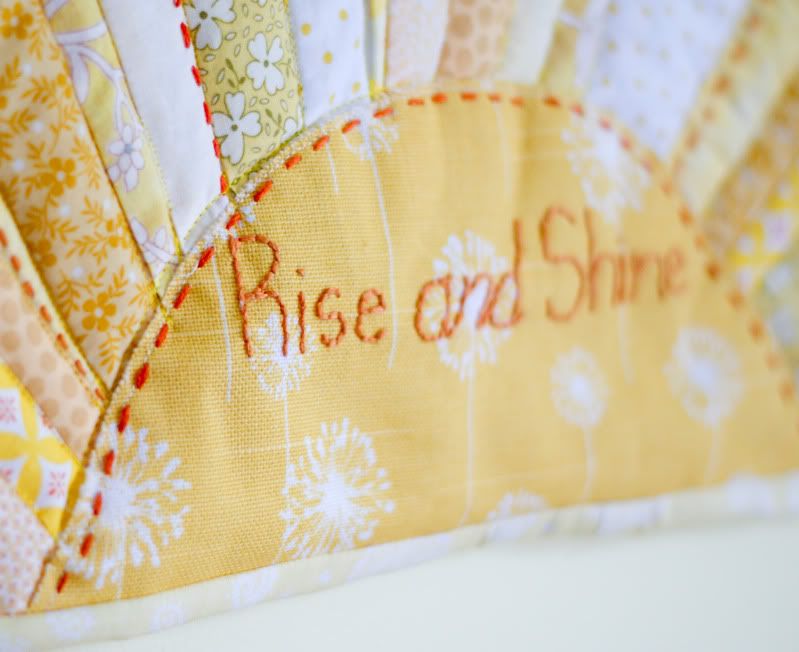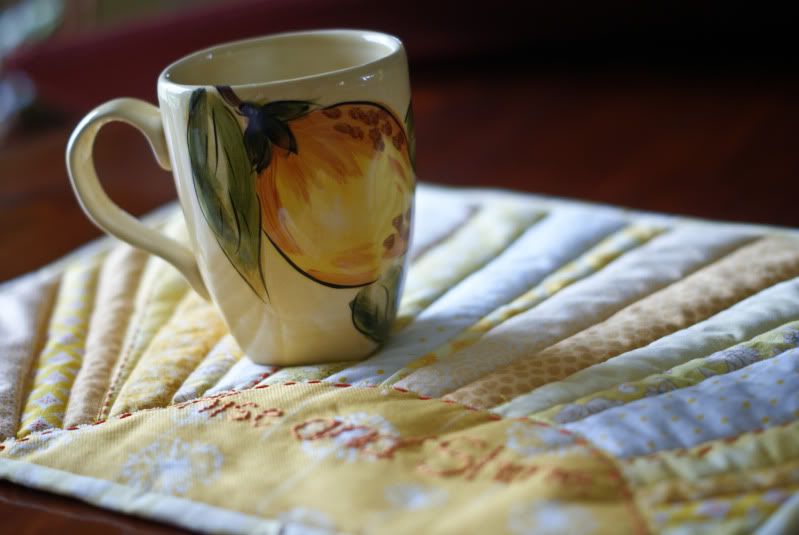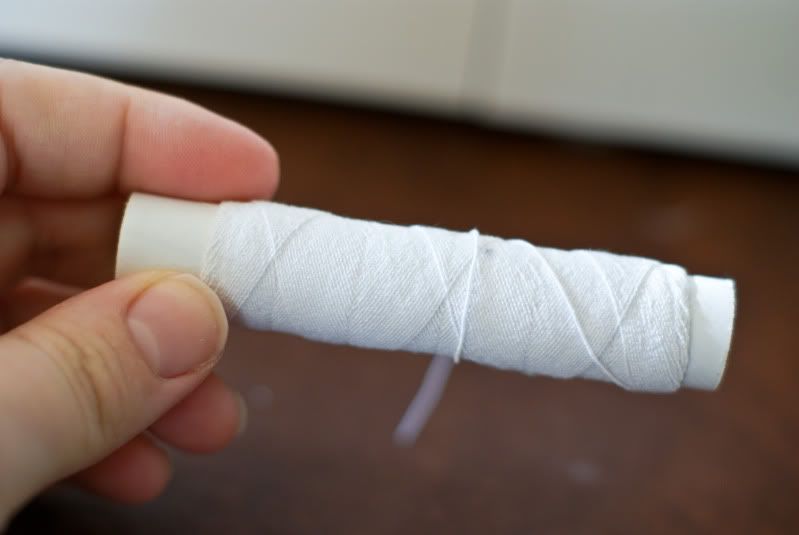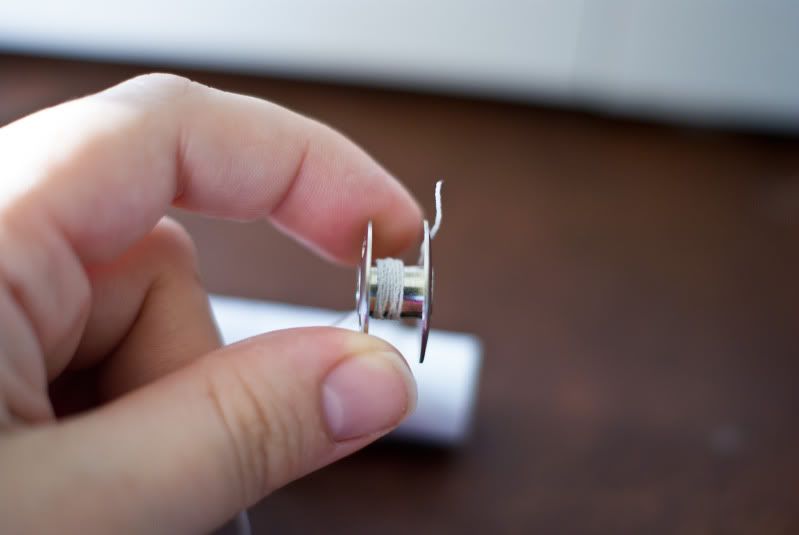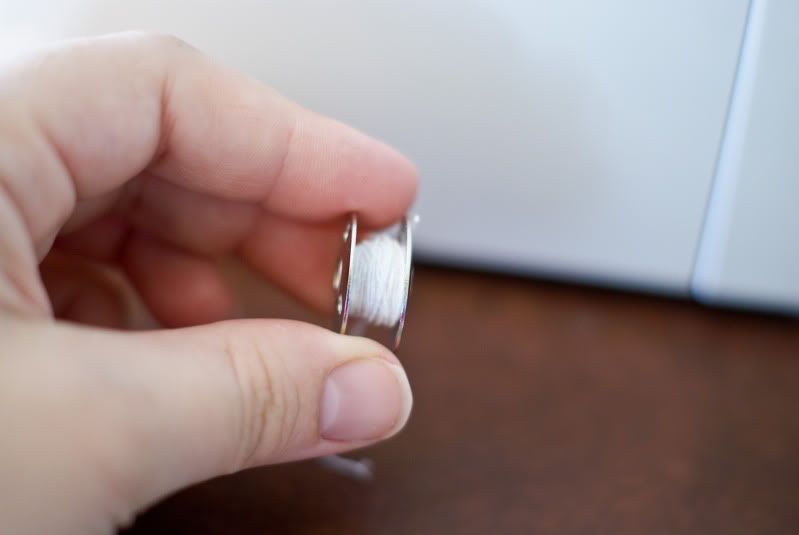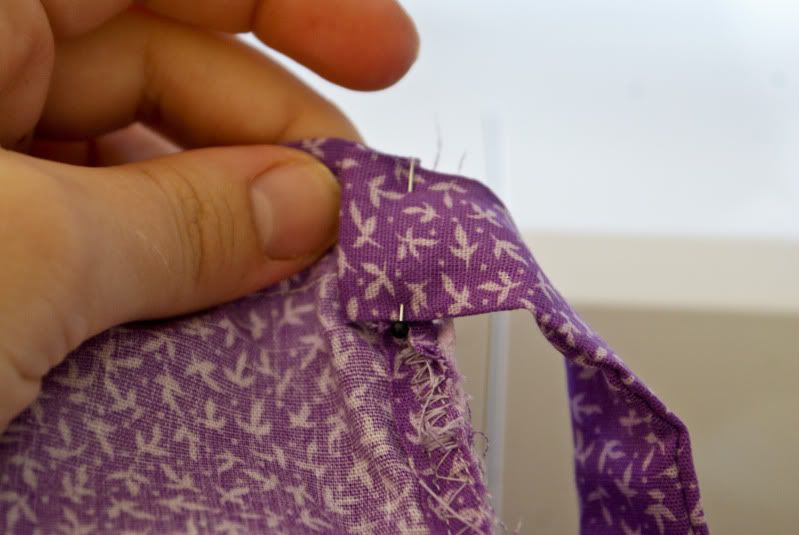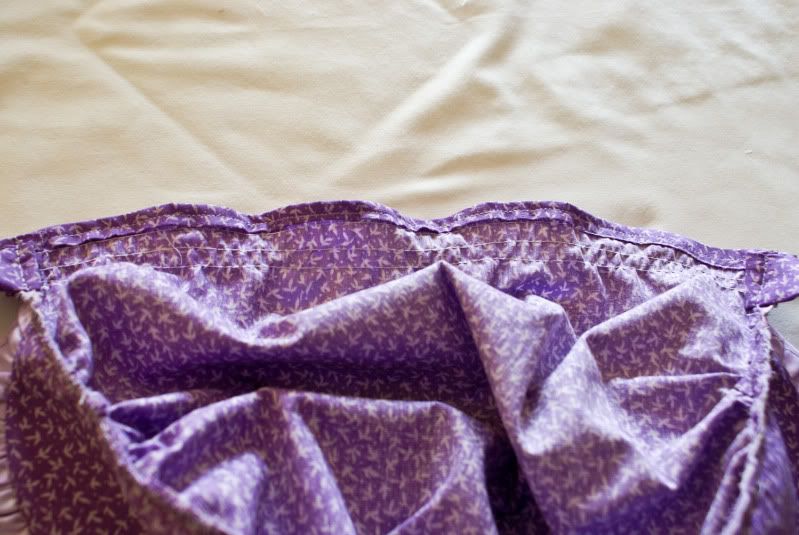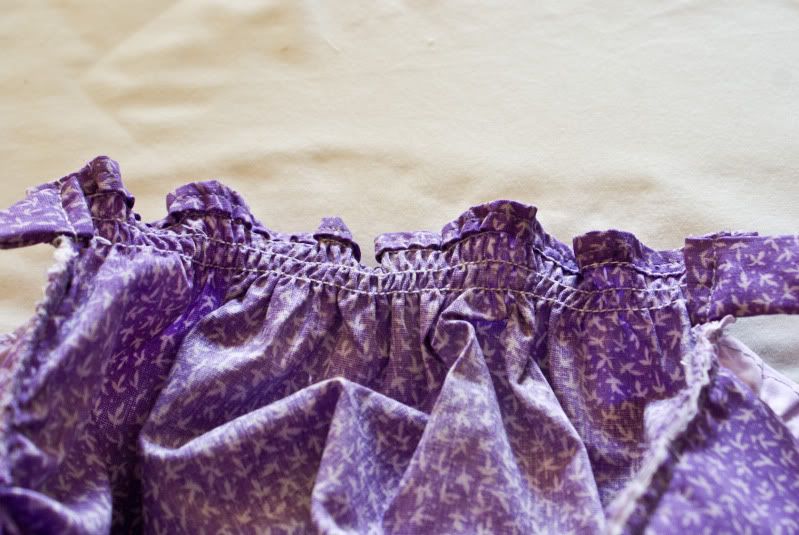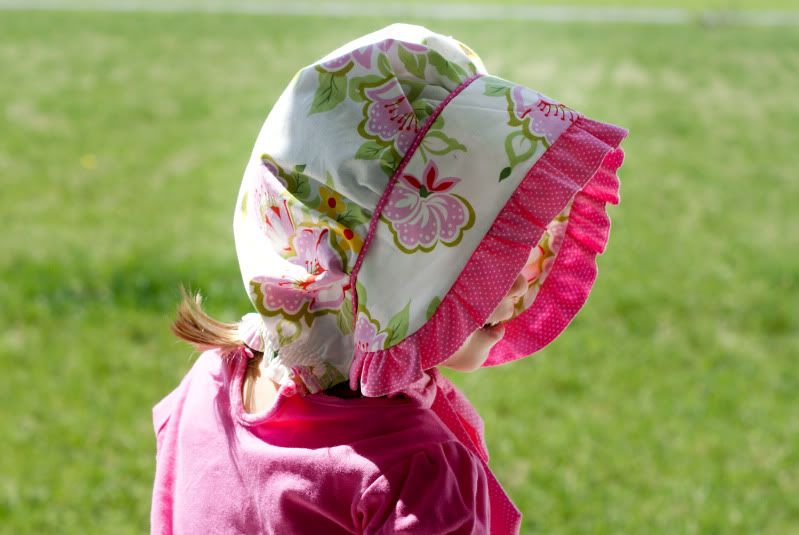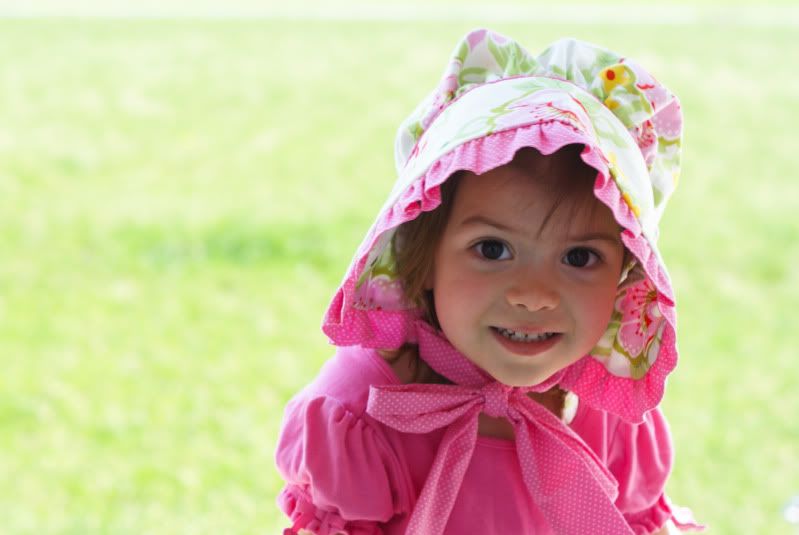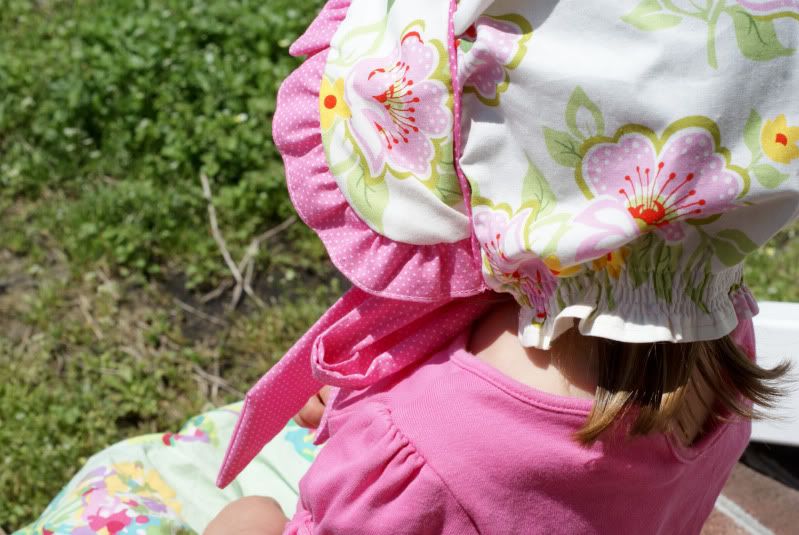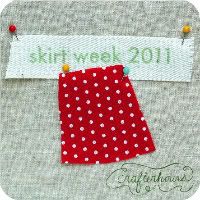Every little girl needs a bonnet - even if it's just to play dress up with!
I made
this bonnet for Madeline for Plow Days, but then tweaked the pattern and added some ruffles and piping for these babies:
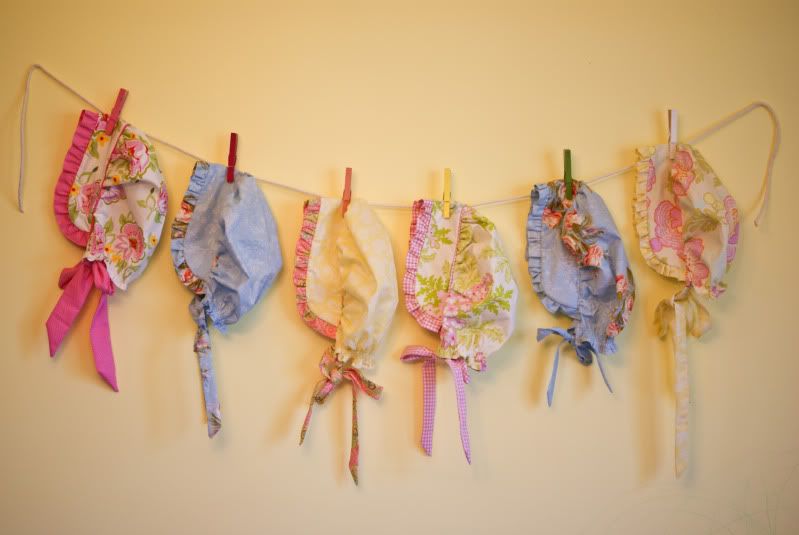
These are really super easy and I'm even going to show you how to shir with elastic thread and make your own piping! As always, I probably included more pictures and instructions than necessary - I know from experience that there is nothing more frustrating than following a tutorial and thinking "I wish they had a picture of
that! I have no idea what that means!". As always, feel free to leave questions in the comments, I'll answer them there.
This bonnet will fit most little girls from 2-5 years old.
Ready, set - let's go!
Materials1/2 yard main fabric
1/4 yard (or less - you may be able to get away with using scraps if you piece strips together, I actually used jelly roll strips I had on hand) trim fabric
elastic thread
thread to match fabric
light to medium weight iron on interfacing
chunky yarn or petite piping
Cut:From Main fabric:15 x 15 - cut one
3.5 x 14 - cut two for brim
3.5 x 20 - cut two for ties (alternately, you could use the trim fabric for the ties)
From trim fabric2.5 x 30 (ish) - cut one for brim ruffle (it's not super crucial to have a particular length here - just as long as it's double your brim length)
1 x 15 - cut one for piping
From interfacing3.5 x 14 - cut two for brim
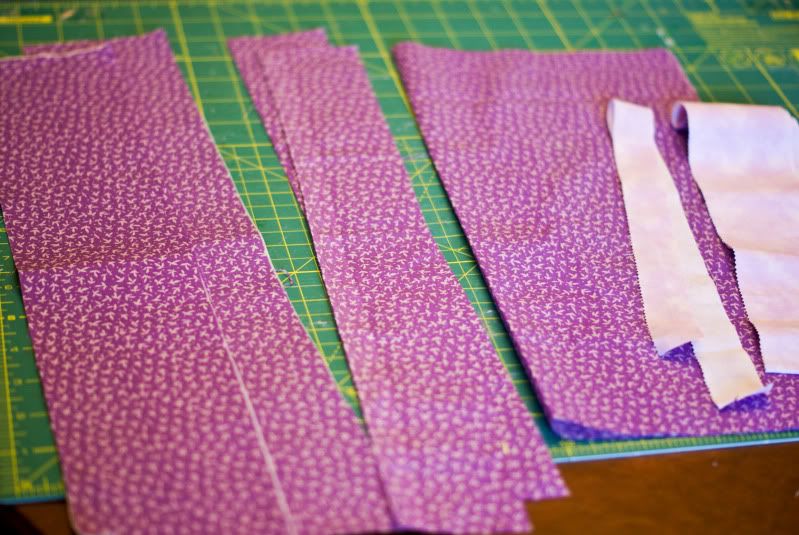
1. Fuse your interfacing pieces to the wrong side of the two brim pieces. This will make your bring a little stiffer and not quite so floppy.
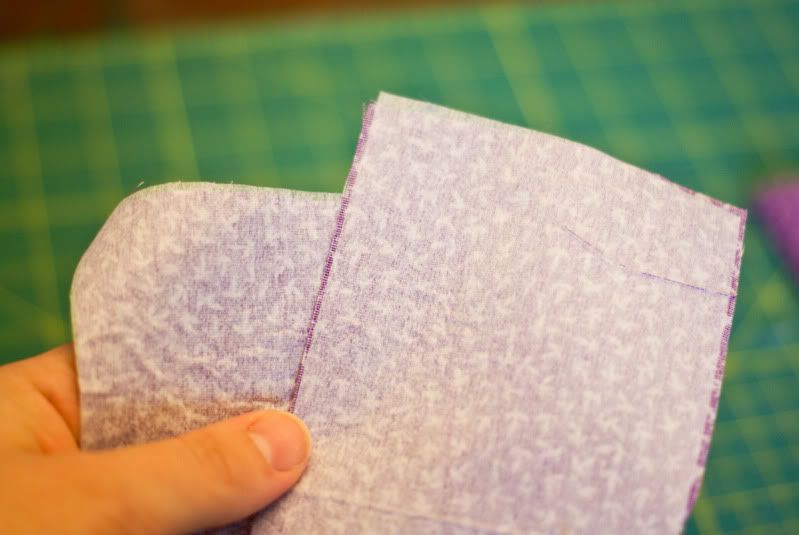
2. Using a bowl or other round object - cut a curve into the short end of your brim pieces. (tip: fold the fabric in half length-wise for matching curves.)
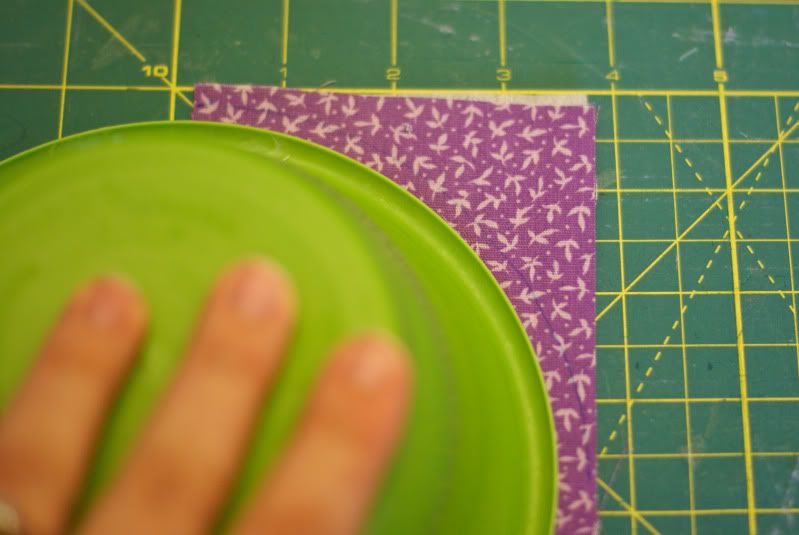
3. Repeat with your main bonnet piece.
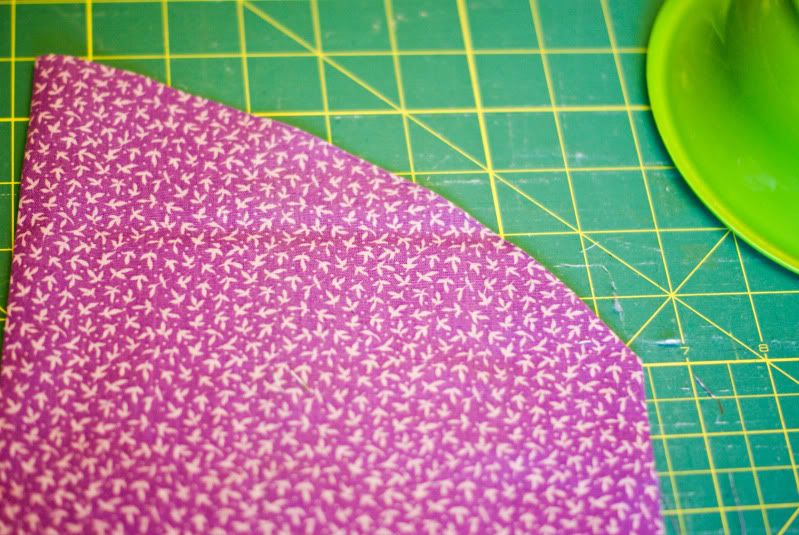
4. Fold your ruffle piece in half, wrong sides together and iron.
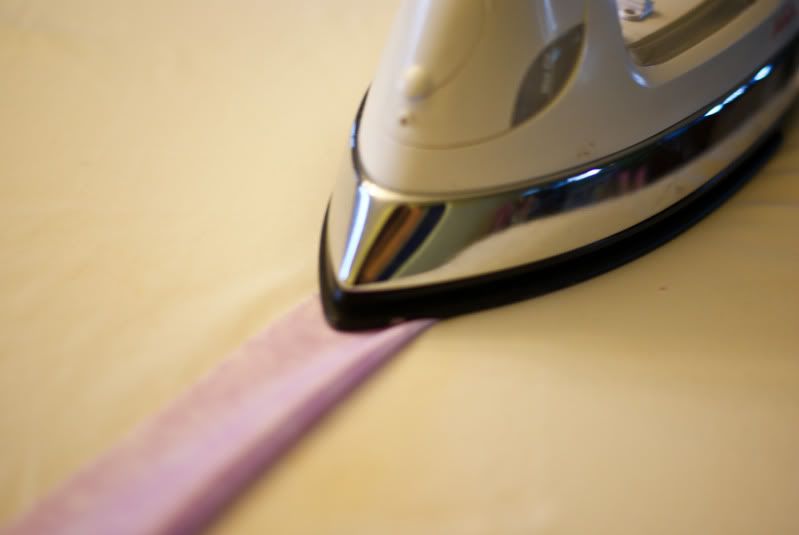
5. Fold your tie pieces in half - right sides together - and iron in half. Fold one short end down at a 45 degree angle (is that right?) and iron. Cut the end of the tie off on the line you just made with your iron, creating a pointed end.
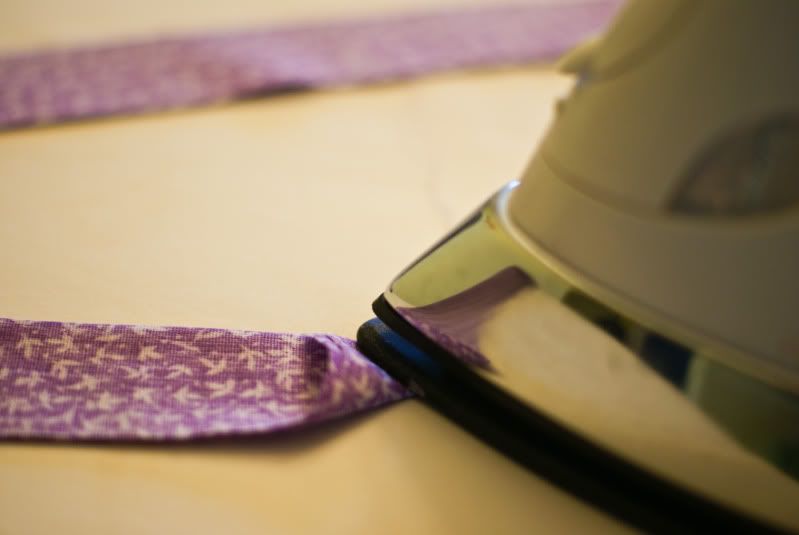
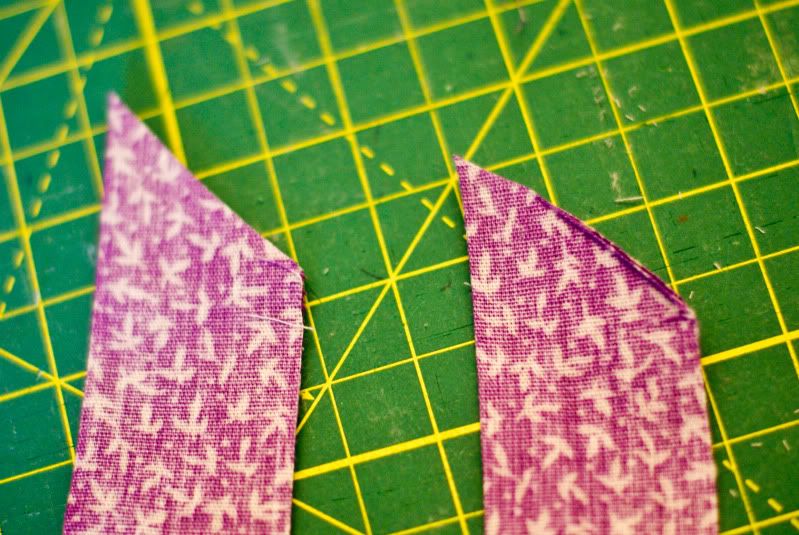
6. Sew your ties together, leaving the short, non pointed end open for turning. Clip corners, turn and iron flat.
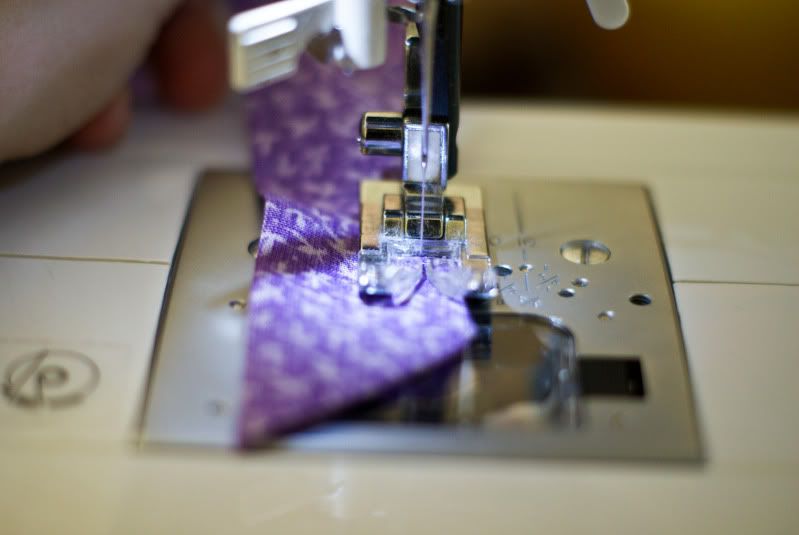
7. Grab your ruffle strip and topstitch along the folded edge.
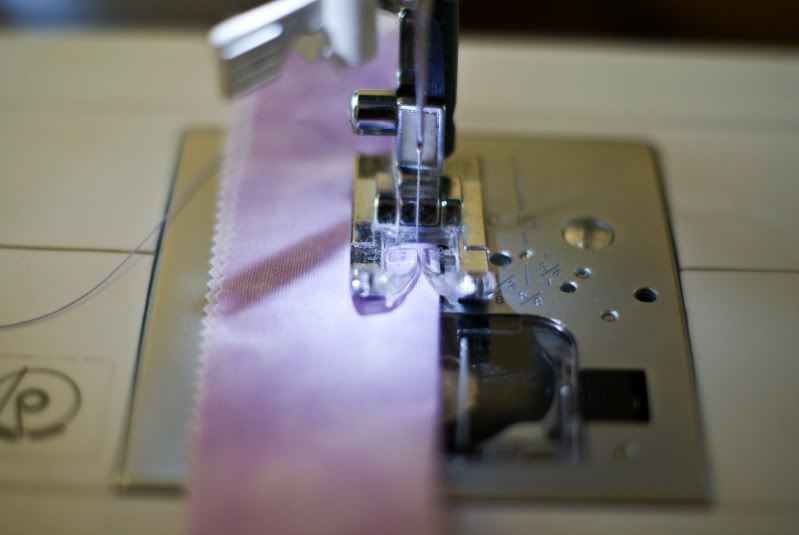
8. Set your stitch length as long as it will go and sew a basting stitch 1/4 inch from the raw edge. Do not backstitch.
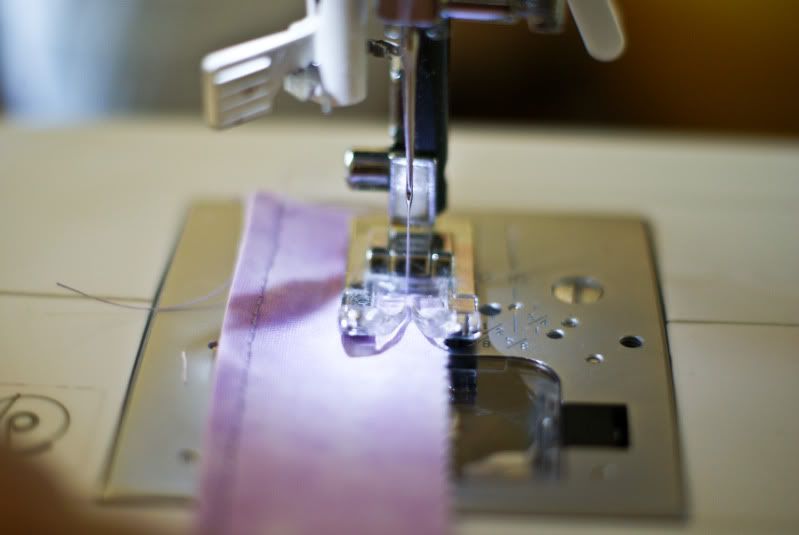
9. Pull the bottom bobbin thread to gather your ruffle. You want to gather it as long as the rounded edge of your brim.

10. Line up the raw edge of the ruffle with the rounded raw edge of one of your brim pieces. Sew onto brim piece using a 1/2 inch seam allowance.
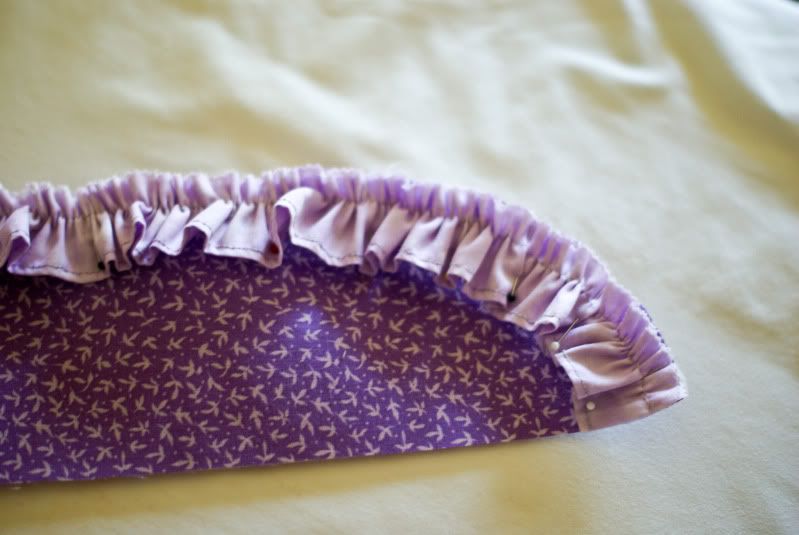
11. Place second brim piece over the first brim piece, sandwiching the ruffle piece inbetween them. Pin. Use the stitches from the first brim piece as a guide, sew pieces together.
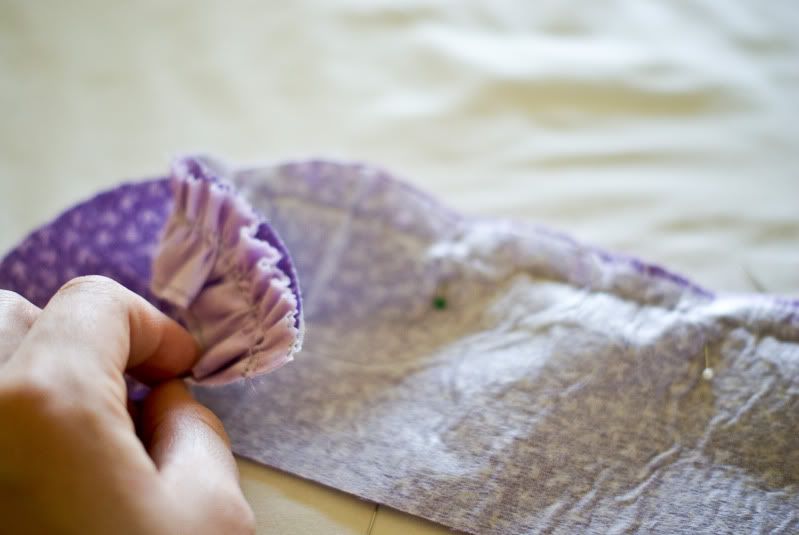
12. Turn and press.
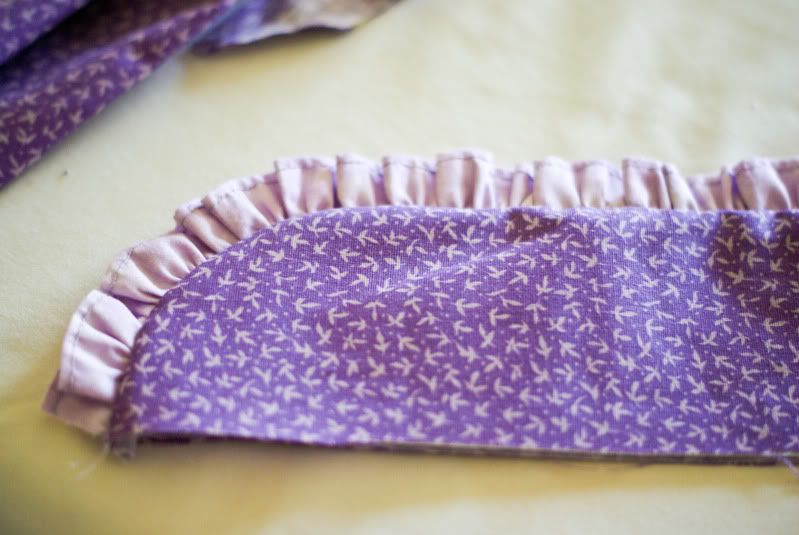 Piping mini-tutorial
Piping mini-tutorialYou can skip this step, but the piping really does turn a plain jane bonnet into something a little more special. You could also pre-made piping. Here's how to easily make your own.
I just wanted very small piping, so I used some 8 ply yarn I had on hand.
Iron your 1 inch strip in half
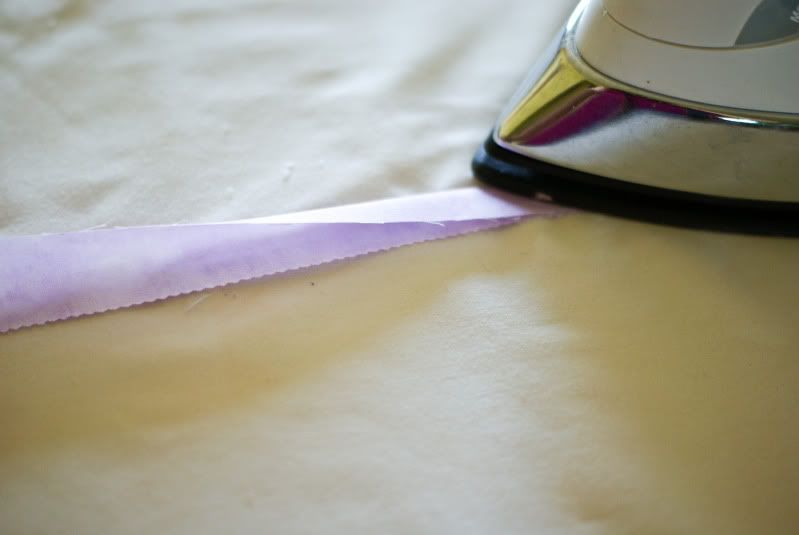
Place your piping (or yarn!) inside the strip in the fold you just created with your iron.

You can use a zipper foot for this step (and you would certainly want to if you ever make larger piping), but I find that using my regular presser foot is fine for small piping like this. Sew as close to the piping as possible, sandwiching the piping in the strip of fabric.
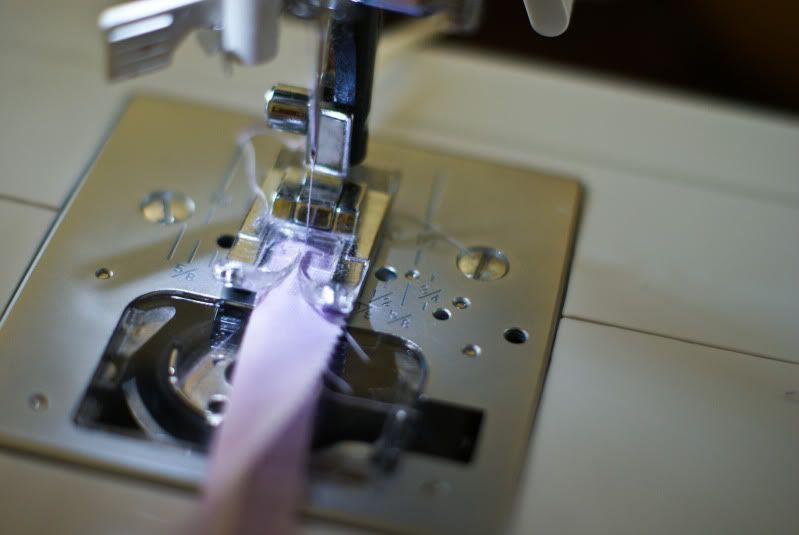
Viola! Piping!
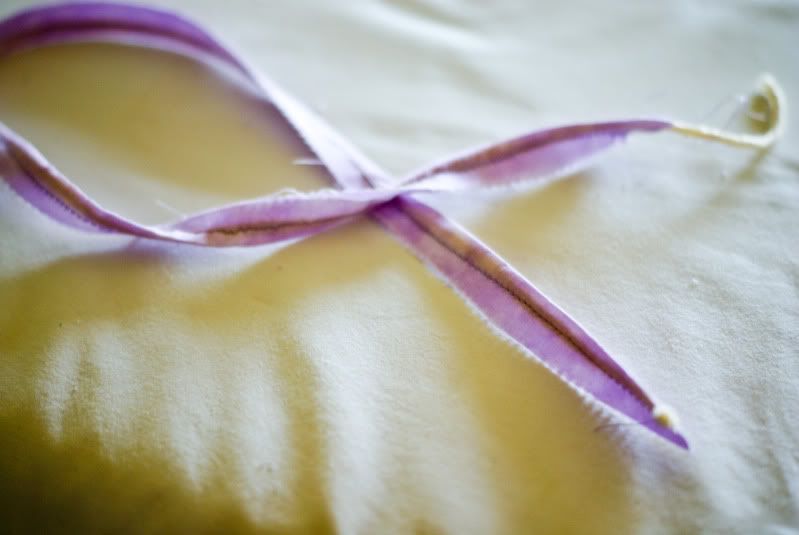
14. Pin your piping on the brim piece, raw edges together. Turn your piping under when you get to where the brim meets the ruffle, as shown in the pictures below and sew onto brim, using the original stitches in piping as a guide.
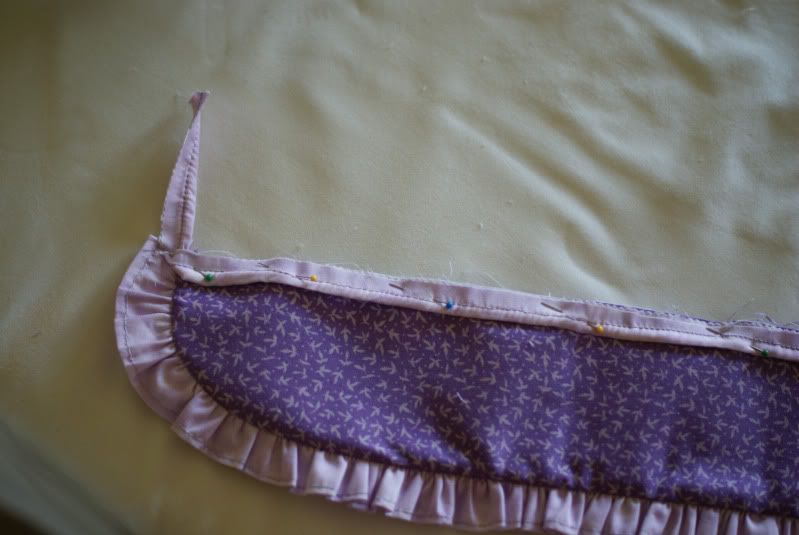
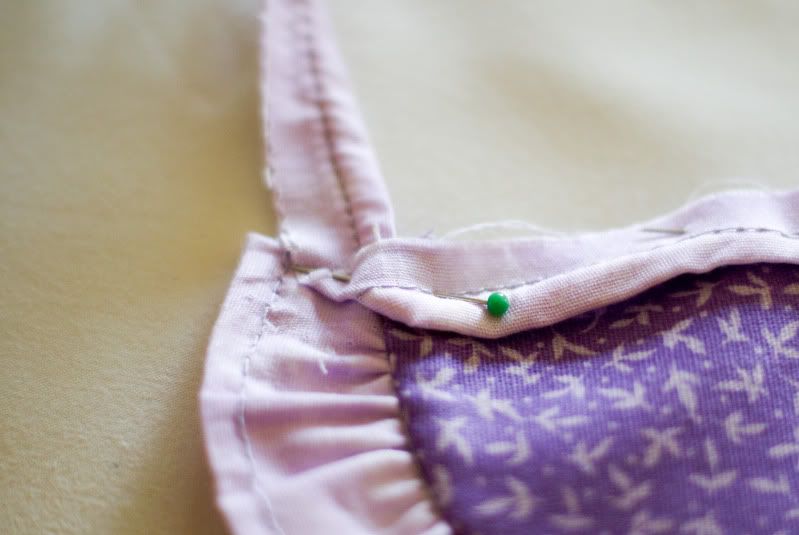
15. Take your main bonnet piece and iron the bottom straight edge under 1/4 inch and then again another 1/4 inch. Stitch.
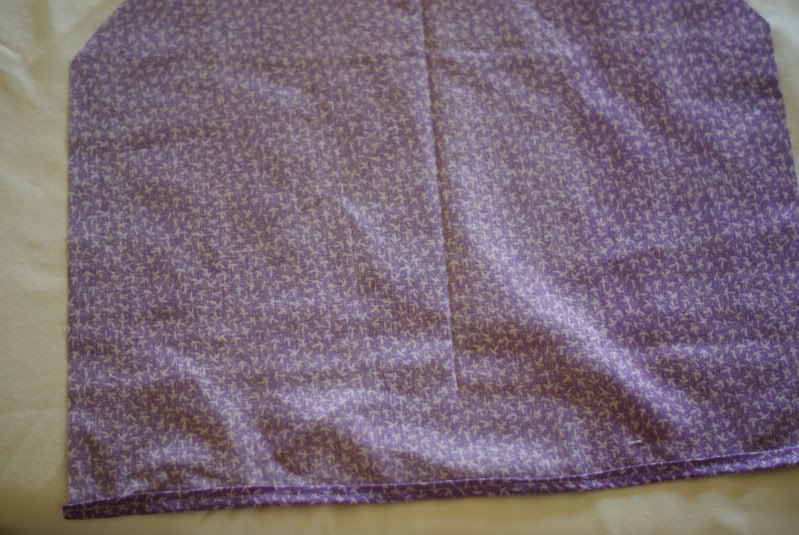
16. Iron the sides of the main piece (just up to the curve) under 1/4 inch and then again another 1/4 inch. Stitch.
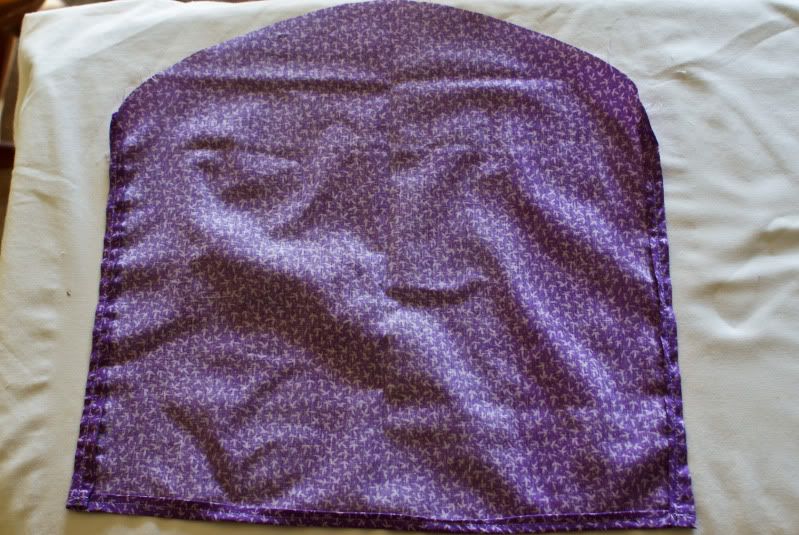
17. Set your stitch length to the longest it will go and sew around the entire curved edge (3 sides). Sew the stitches on the
inside of the finished edges you just sewed - otherwise you won't be able to gather the stiches.
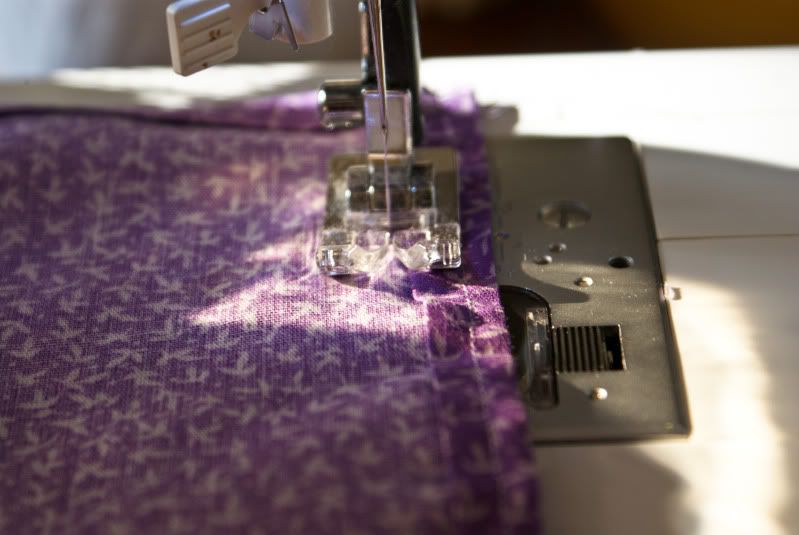
18. Gather the stitches.
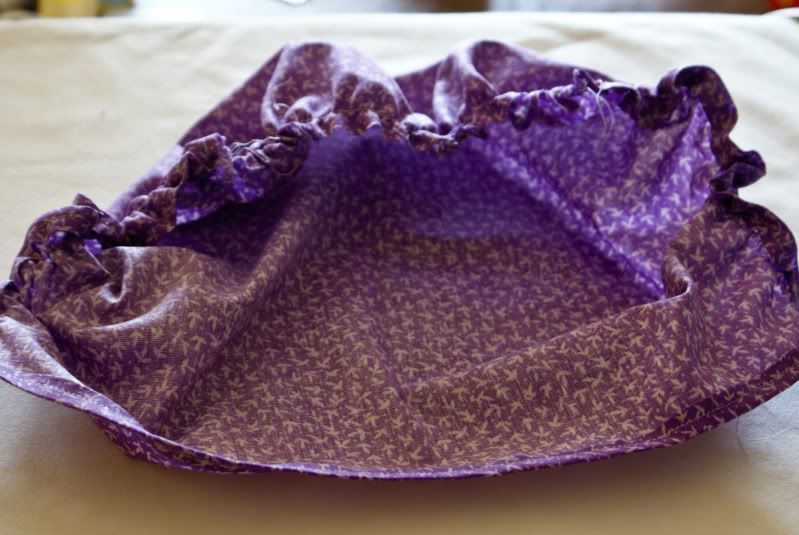
19. Pin the bonnet piece to the brim piece, right sides together (piping is sewn on the right side) and raw edges alined. Leave 1 1/2 inches of the main bonnet piece on each end of the brim, as shown in the pictures below.
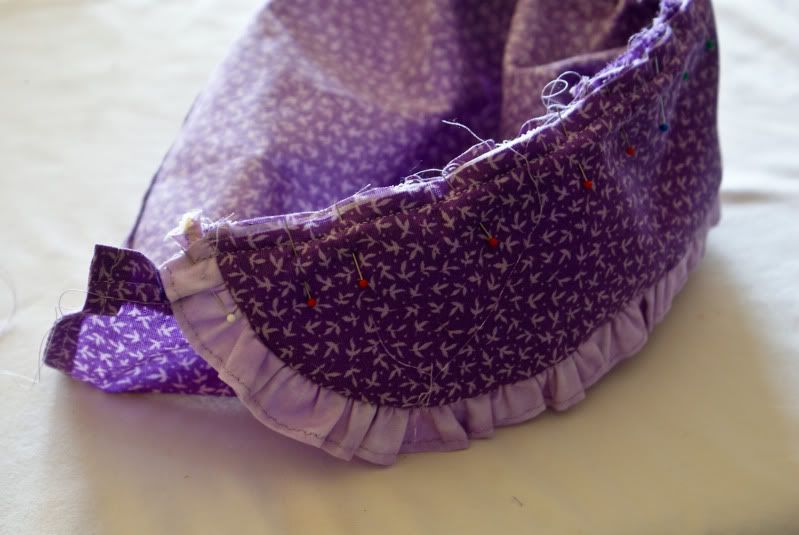
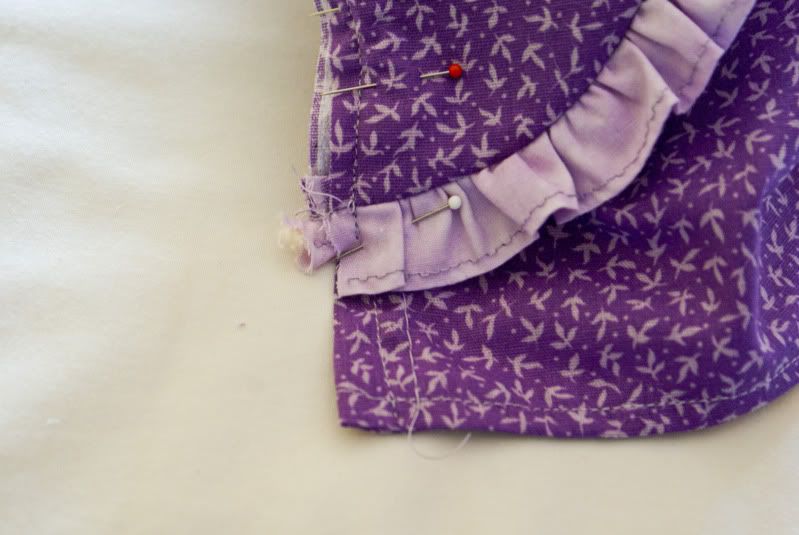
20. Using a 1/2 inch seam allowance, sew brim and main piece together, using the stitch line from piping on the wrong side of brim piece as a guide.
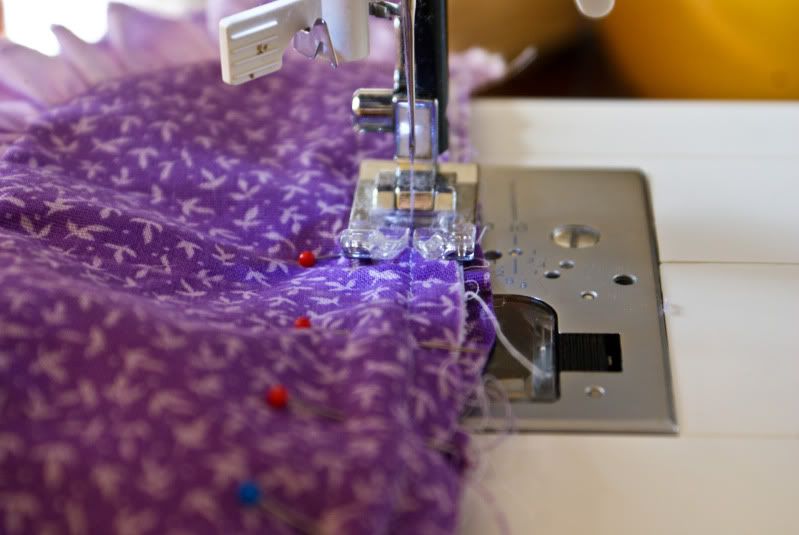
21. Trim away excess fabric and use a zig zag sitch to reinforce the seam.
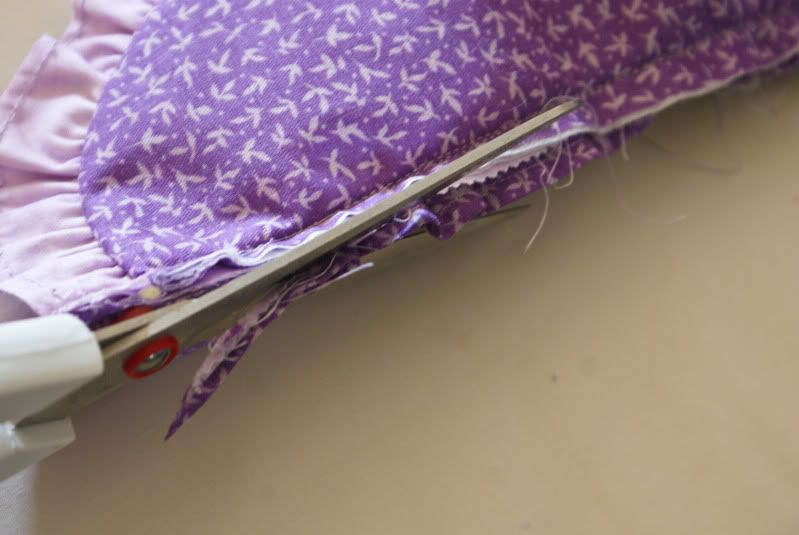
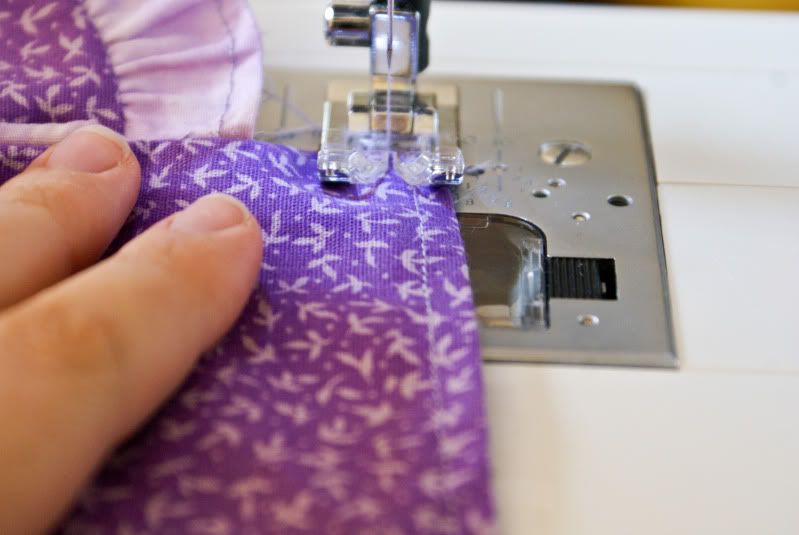 Mini shirring tutorial
Mini shirring tutorialBy using elastic thread in your bobbin, you can create a stretchy stitch that creates a faux smocked look. It's super easy and a great way to create shape.
I'd love to see a picture if anyone attempts a bonnet from this tutorial!
Molly

